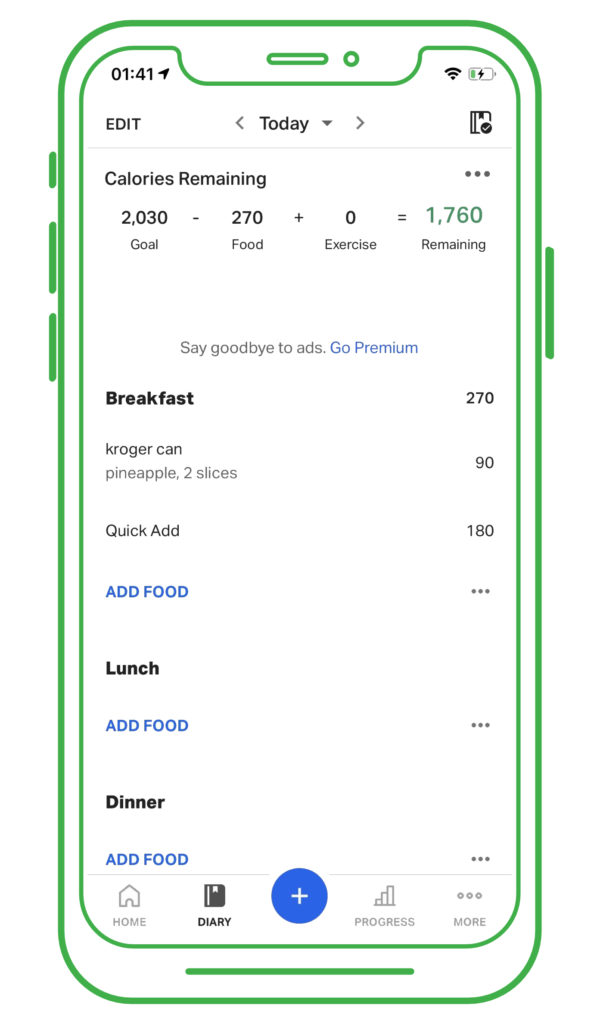Macros 101
CALORIES VS. MACROS: WHAT IS ALL OF THIS?
CALORIES VS. MACROS
What Are Calories?
A calorie is the energy it takes your body to raise 1 gram of water by 1 degree Celsius. Simply thought of as a measurement of the energy we need to fuel our bodies.
If you’re like us, you’ve “counted calories” before. You’ve searched for a calorie calculator online, plugged in some numbers, and verified it against some other calculators, and then did your best to follow a cookie-cutter approach that gave you a limited number of calories a day without much guidance.
The “crazy” thing is you can still see success with this approach. As long as you are in a calorie deficit, you will lose weight! A calorie deficit is any amount of calories consumed under your basal metabolic rate (AKA your BMR – minimum number of calories required for basic human functions at rest).
The problem with this approach is that it is only 50% of what is needed to ensure long lasting success. The simple calories in vs calories out equation will always tell us if you’re eating too much or too little, but there’s more to our bodies than just the energy needs. By eating the right ratio of different calories, we can manipulate body composition, increase performance, improve energy, brain function, and so much more!
Calories are the foundation of your nutrition, but we can fine tune this approach by tracking 3 of the bigger kinds of calories, the macronutrients.


CALORIES VS. MACROS
What are macros?
Macronutrients are what calories are made of. There are 3 macronutrients: carbohydrates, proteins, and fats. Each of these serve a different and important role in your body, but they each have their own calorie count per gram.
By tracking the amount of grams of each macro we consume, we can find the amount of calories we are consuming as well as tailor the ratios to better suit individual needs. When we track macros rather than just certain kinds of foods, there is ultimate food flexibility. No food is “off limits” as long as you can track what you eat. Of course, there are preferred options, but the beauty of eating within a flexible framework is that it is not restrictive. You can still eat the foods you love and be successful.
We as coaches rarely use calculators to determine a member’s starting macro targets but if you need a good starting point, below are a couple macronutrient calculators that’ll set you up to use the info in this guide well:
Benefits of Each Macro
Protein
- Made up of amino acids which are the building blocks of building muscles in the gym and aiding the muscular repair!
- Protein supports lean muscle retention when your goal is to lose body fat
- Keeps your body healthy, strong, and in constant state of repair
- Fuels immune system
- Has the highest thermic effect of food (uses the most energy to digest)
- High level of satiation helps keep you fuller for longer!
Carbs
- Carbs are your body’s preferred energy source. Think about your carbs as “gas in the tank” for your body!
- Stored in your muscles as glycogen (aka- ENERGY!)
- Most readily available energy source for your body and easily digestible
- Keeps your muscles feeling fresh after long workouts!
Fat
- Insulate your body, protect vital organs, and assist with brain function and hormone regulation
- Support cardiovascular health (EPA and DHA Omega-3 fatty acids)
- Improve joint health and digestion
- Slows down the digestion of food, helping you stay fuller for longer

WHERE YOU CAN FIND SOME OF THESE MACROS
- Green Veggies
- Cauliflower
- Squash
- Sweet Potato
- White Potatoes
- Fruits
- Whole Grains
- Rice/Pasta
- Oats
- Egg Whites
- Chicken Breast
- Pork Tenderloin
- 93/7 & 99/1 Ground Turkey
- White Fish
- Tuna
- Greek Yogurt
- Cheeses
- Steaks/Beefs
- Avocado
- Coconut Oil
- Olive Oil
- Butter
- Ghee
- Fish Oil
- Mayo
- Almonds, Peanuts, Walnuts
- Nut Butters (Peanut Butter)
How To Track Your Food
There are 3 things that you need in order to accurately track food:

FOOD SCALE
The food scale is going to be your best friend in the kitchen. Your food scale will tell you what an accurate serving size is, as well as keep you honest with what you are actually eating. Any food scale from Amazon or Wal Mart will work, but we’ll share one we prefer below. To use the food scale, simply “zero” or “tare” the scale, place the amount of food on the scale, and record the amount. This takes a bit of getting used to, but it will be second nature to you soon enough!
SMARTPHONE & MYFITNESSPAL
We will utilize a smartphone app called MyFitnessPal (also available on a desktop). MFP has a huge database of verified foods that will give you accurate data of what you are actually eating. There is also a scanning feature where you can directly scan barcodes of foods and packages which will populate it in the app! It’s a free app that also has a premium option.
CONSISTENCY
There is a bit of a learning curve here. Your first few days and weeks might be frustrating but continue to be consistent and this will be an easy process for you soon enough! Follow these consistently for at least 2-3 weeks, and if you need help, consider hiring a coach!
- Need a Food Scale? This is the one we prefer
- Your Essential Guide to MFP
- 10 Tips for MFP Newbies